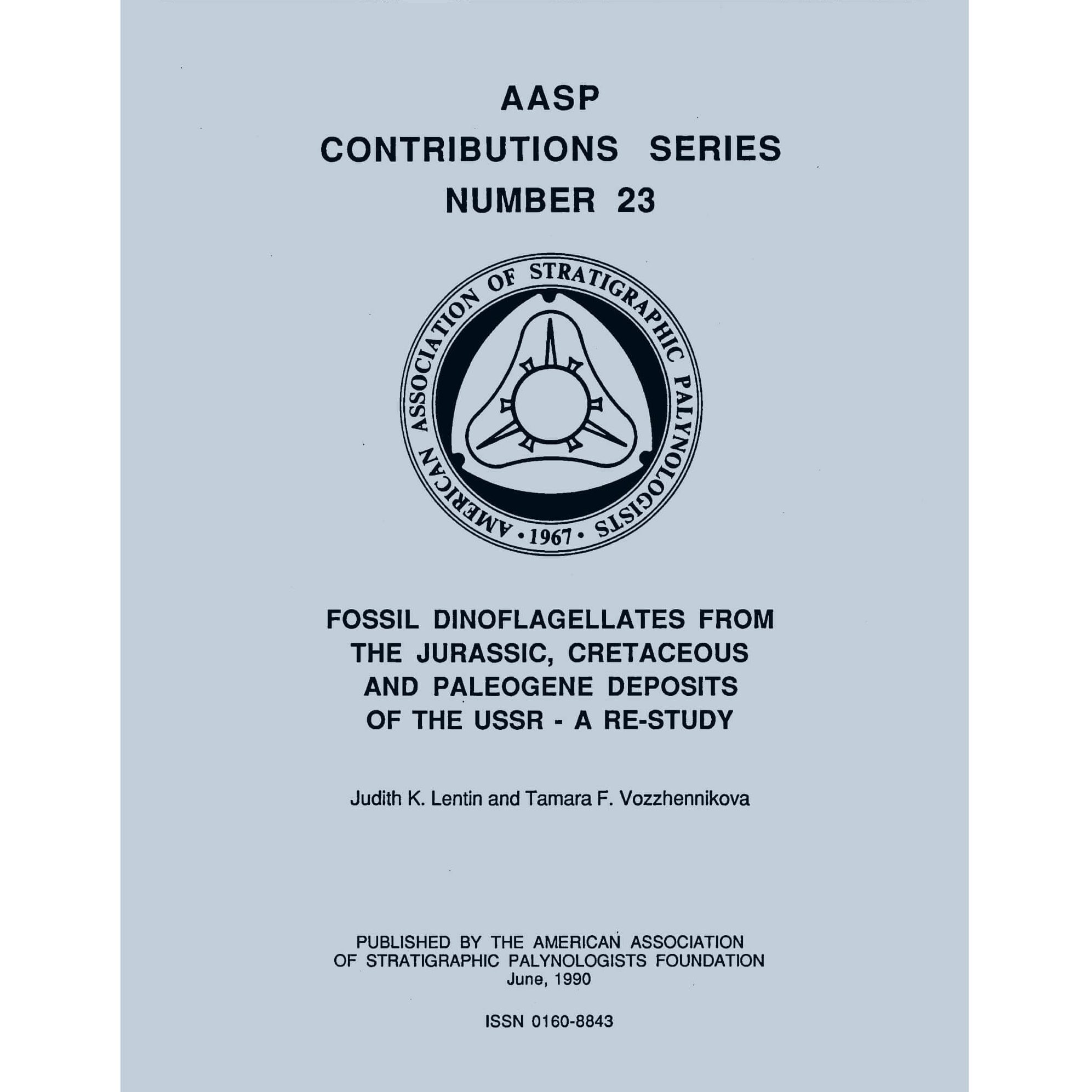Contributions Series Nr. 23 (PDF)
$6.00
Fossil Dinoflagellates from the Jurassic, Cretaceous and Paleogene Deposits of the USSR – A Re-Study
Judith K. Lentin and Tamara F. Vozzhennikova
1990
PDF only
230 pp.
Description
Abstract
In 1960, 1963 and 1967, Professor T.F. Vozzhennikova published papers and a monograph on the morphology of fossil dinoflagellates from the Jurassic, Cretaceous and Tertiary of the USSR. These publications have become classics in the field of palynology in general and dinoflagellate studies in particular. In recent years the improvement in photographic and printing techniques, as well as newly evolving morphological and taxonomic concepts emphasized the need to re-examine the material upon which these early publications were based.
All of the surviving holotypes from the Vozzhennikova collection have been re-examined and photographed. The resulting new descriptions are presented in both English and Russian. A glossary of morphological terminology and a bibliography of Soviet publications on dinoflagellates are also presented in both English and Russian.
There are three new genera in the family Gymnodiniaceae, Alisogymnium gen. nov., Amphigymnium gen. nov. and Yolkinigymnium gen.nov. which result from a comprehensive study of all fossils in the family Gymnodiniaceae. Line drawings of all species within this group are presented in Appendix A. The new genus Arvalidinium gen.nov. is erected for two species formerly in the genus Chatangiella which exhibit distinctive parasutural ridges. A fifth new genus, Sokolovidinium gen.nov., is erected for species similar to Microdinium but which have distinctive long gonal spines and a precingular archeopyle. Five genera, Smolenskiella, Soaniella, Uvatodinium, Imbatodinium and Rhiptocorys, have been emended. There is 1 new species, Batioladinium daviesii sp.nov., erected for forms previously attributed to Imbatodinium kondratjevii from the Canadian Arctic. There are 26 specific emendations, 16 expanded specific descriptions, 1 change in rank, 11 species considered to be junior synonyms, and 24 new combinations.
